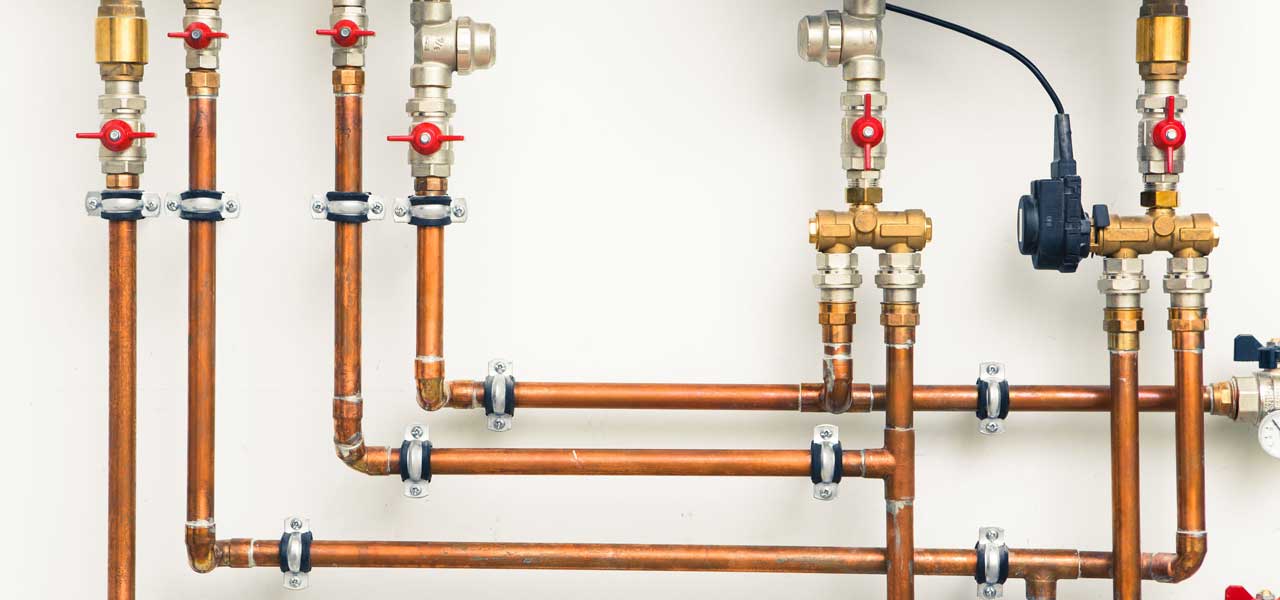Professional Copper Pipe Installation in Houston
If you’re thinking about re-piping your home, there are more options than ever to consider. PEX, PVC, galvanized steel, and copper are all materials that can be installed in your home to carry water and sewer waste, but which one is best for your home?
If you want to base your decision solely on quality and reliability, copper pipe installation is still your best choice.
How long has copper piping been around?
Using copper for water delivery dates back over four thousand years to ancient Egypt. Copper has been in use in residential plumbing since the early 1900s and continues to be the choice for new construction and remodeling projects. Many of the homes we perform work on in the River Oaks area were built in the early 1900s. They all have the original copper piping, and most of it is still in perfect condition. Why is that? Copper is not prone to corrosion like other materials used for pipes.
There has been a lot of emphases placed on PEX piping, which is a flexible plastic tube. It is cheaper to manufacture and install than copper. Yet PEX pipe does not have the established track record that copper plumbing has.
Is copper pipe installation expensive?
Copper piping is more expensive than PEX or PVC piping, because copper is a precious metal, and it is more time consuming to install. A copper pipe installation will typically add $2,000 – $3,000 to the initial cost of a whole house re-pipe. While this may seem like an unnecessary and expensive option, consider the lack of maintenance costs along with copper’s long, proven lifespan. Plus, the added value that copper pipes bring to your home, and a unanimous win for copper.
Copper piping in your home will help save you money in water heating costs, as it is an unbeatable conductor of heat. Hotter pipes equal hotter water at your faucets and showerheads. PEX and PVC pipe have no heat conducting ability. Thus, a lot of energy is lost, moving hot water through cold plastic pipes.
Is Copper Piping Safe?
Copper piping is naturally antimicrobial and cannot support the growth of bacteria, fungi, or viruses (unlike steel or PVC). When it’s dry, it can kill e.coli, the influenza virus.
If you were to look at a typical city of Houston water quality report, you would see that the water often fails for bacterial contamination. However, you have copper pipes as your supply lines. The compounds eliminate bacteria that enter your home in the copper.
What is the life expectancy of copper plumbing?
When properly installed, your copper plumbing should last you at least 50 years. However, that’s at a minimum. It can last upwards of 60 to 70 years if you maintain your pipes properly. Issues such as pinhole leaks, corrosion, and dirty piping can decrease the lifespan of your plumbing. So when you do spot any of these problems, you must take care of them as soon as possible. You don’t want to be forced to re-pipe your whole house because you neglected a problem.
Types of Copper Piping
If you’ve decided to re-pipe your home with a copper and decide to take bids on the job, here’s a little knowledge to help your negotiating process along. There are two types of copper piping used in the plumbing industry, Type “L” and type “M.” Of the two, type “L” is thicker and more resilient, and your best choice for longevity and quality. Nick’s Plumbing Service only use type “L” copper piping for all our copper pipe installation projects. Always be sure to ask the contractor providing your bid on which type of copper piping they are installing!
Can you clean copper water pipes?
Yes, you can clean copper water pipes. There are a few ways to do it. The most straightforward approach would be to purchase a commercial cleaner. It will remove the calcium, lime, rust. You’ll also want to ensure that you always wear a face mask and gloves while using chemical cleaners as per manufacturer’s instructions.
For a more natural solution, you can mix vinegar and salt to clean copper piping. You will want to leave the mixture on the copper pipes for approximately 10 minutes. Then you’ll want to rinse with hot water. To get an even deeper clean, try turning off your water supply, remove the pipes and soak them in vinegar for about 15 minutes. Once you’ve completed the cleaning, you can reinstall your pipes and admire how brand new they look.
Can you prevent copper pipes from corroding?
Though copper pipes are less prone to corrosion than its cousin – steel, it still can sometimes happen. If you see it starting to happen, you’ll first need to identify the source of the problem. Sometimes it happens due to electrical faults. Such as wiring connects to the piping when it isn’t supposed to or plumbing that isn’t properly grounded and prevents the water from flowing correctly. There are other times when the pH level of the water flowing the pipes is off, creating acidic water. This will eat at the copper over time.
One solution is to install a calcite neutralizer tank or a phosphate feeder. A calcite neutralizer will solve with pH problems; it will adjust the water’s pH level to a less acidic level. A phosphate feeder is another right choice for reducing corrosion problems. It protects the pipes in a layer that helps it protect it’s exterior from external damage.
Do copper pipes need to be replaced?
Like all piping, copper pipes will eventually need to be replaced. Yes, copper piping lasts much, much longer than any of its competitors. Still, it will ultimately need to be replaced if you start to notice musty and stale smells. Or see bulges on your walls and ceilings or notice crust on your pipes. These are all signs that you’re probably going to have to fix or completely replace your pipes, perhaps sooner than you’d initially thought.
What are signs my copper pipes might need to be replaced?
1. Suddenly low water pressure.
If your water pressure drops dramatically and quickly, that’s usually a fairly good sign of a leak. We encourage you to get that checked out before it turns into a more severe problem.
2. Ceiling stains, soggy carpets, or other signs of a leak
If any of these signs appear on in and around your home, then it’s time to take a look at your copper pipes. It could just be a pinhole leak, or it might be something more serious. Either way, it’s time to have a look at it.
3. Teal stains
If you notice a blue-green tinge to your bathtub or shower and it isn’t molded, that very well might be an indication of pipe corrosion. Hot water used in a bath or rain tends to wash away, built up corrosion in the pipes, and spill it onto you. The blue-green color is the result of copper oxidizing (just think of the Statue of Liberty).
4. Water Stagnation
If you’ve turned your home’s water off for an extended period, the stagnant or sitting water in the pipe can start to destroy them. If you’re going away for a more extended period, shut off the water and drain your pipes before leaving. This will protect your pipes from potential corrosion. It can also protect them from bursting during freezing weather.
Copper Pipe Installation Experts
If you start to experience any kind of issue with your copper pipe or feel the time to replace our old ones with new copper ones, give us a call. Nick’s Plumbing Service are available to come to you and provide a written cost evaluation for your copper pipe installation project. Nick’s Plumbing has been the go-to expert for plumbing installation and repair in Houston since 1979, with trained, background checked, and licensed plumbing professionals!
























